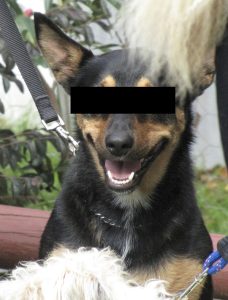 Zed*, at six years, was a happy, healthy companion dog living an easy life in a Triangle village. She loved her daily walks, chasing balls, chewing bones. But Zed was a dog without a job—until this past winter when her human, Elly*, saw a notice on the Cobargo Forum: ‘Truffle dogs required’.
Zed*, at six years, was a happy, healthy companion dog living an easy life in a Triangle village. She loved her daily walks, chasing balls, chewing bones. But Zed was a dog without a job—until this past winter when her human, Elly*, saw a notice on the Cobargo Forum: ‘Truffle dogs required’.
Elly was intrigued. She knew that Zed was intelligent, obedient and learned new tasks and tricks quickly. Could truffle sniffing be an outlet for her? She booked an audition.
Truffles are fungi that grow underground on the roots of some trees. They are incredibly pungent and add a particular musky flavour to foods, so are held in high esteem in many cuisines. But, being rare, they are highly priced and will set you back upwards of a dollar a gram. Luckily, even the tiniest shaving of truffle will impart its flavour.
Farmer Fiona Kotvojs had planted 270 truffle-spore-inoculated oak and hazelnut trees on a hectare on her family’s Dignams Creek property in 2013. She’d been researching viable crops and discovered that truffles and their host trees form a symbiotic relationship that thrives in poorer soils like those in parts of our region. She spoke with other land-owners and arranged a truffle-growing workshop for interested members of the community.
‘It’s an off-season crop,’ she says. ‘Truffles ripen over winter. So I hope that, in time, there could be knock-on effects—boosts to hospitality and tourism in the region.’ As well as providing work for unemployed dogs …
So what does Fiona look for in a truffle-sniffing dog? A keen sense of smell?
‘Actually, all dogs have a keen sense of smell,’ she says. ‘What truffle farmers look for is a dog that likes to work and to play, the ability to learn new tasks happily and quickly, and the stamina to keep sniffing! Working dogs are best as they love to be useful.
‘The truffle-dog owner—the handler—is a key element here. I don’t train the dog, the owner does. They work as a team.’
Elly says, ‘I adopted Zed when she was three months old. An elderly gentleman had surrendered her to the Animal Welfare League. He loved her but—wisely—realised that his lifestyle wasn’t going to suit her. She needed training, exercise, engagement.
‘When we first met Fiona, I showed her Zed doing some tricks. That was our audition. Then I went home and Googled “truffle dog training”. There was a lot about training dogs to do other things, but nothing specific to truffles. So I invented a program, with a few tips from Fiona. She had given us a tiny vial of truffle essence, which I sealed in a screw-top jar with a bunch of cotton balls for a few days. Every time I opened my refrigerator I was hit by the aroma.
‘Then one day I took out a cotton ball, gave Zed a sniff, said, ‘Truffle!’ and gave her a treat. I did that a few times. It was a new game and Zed was up for it. Over the next six weeks I made the game more and more complex, ending up with the ‘truffle’ being buried ten centimetres deep in the garden, and making a great fuss of Zed when she found one.
‘The first time we visited Fiona’s truffle patch, Zed found a 170-gram truffle. That’s huge! She found some smaller ones too.’
Elly and Zed became regular visitors to Fiona’s truffle patch. ‘When Zed finds a truffle she pushes her nose to the ground, sniffs deeply and sits down and looks at me. Then Fiona and I scrape back the soil to check if the truffle is ripe.’ Fiona has been selling her harvest to local restaurants and keen domestic chefs.
So has Zed completed her training?
‘No, what we’re teaching her now is to discriminate between ripe and unripe truffles,’ says Elly. ‘In truffle development terms there’s only a few days’ difference, but she’s getting there.’
* Truffle dogs—and their handlers—are a valuable commodity! Identities have been disguised. Some names have been changed.